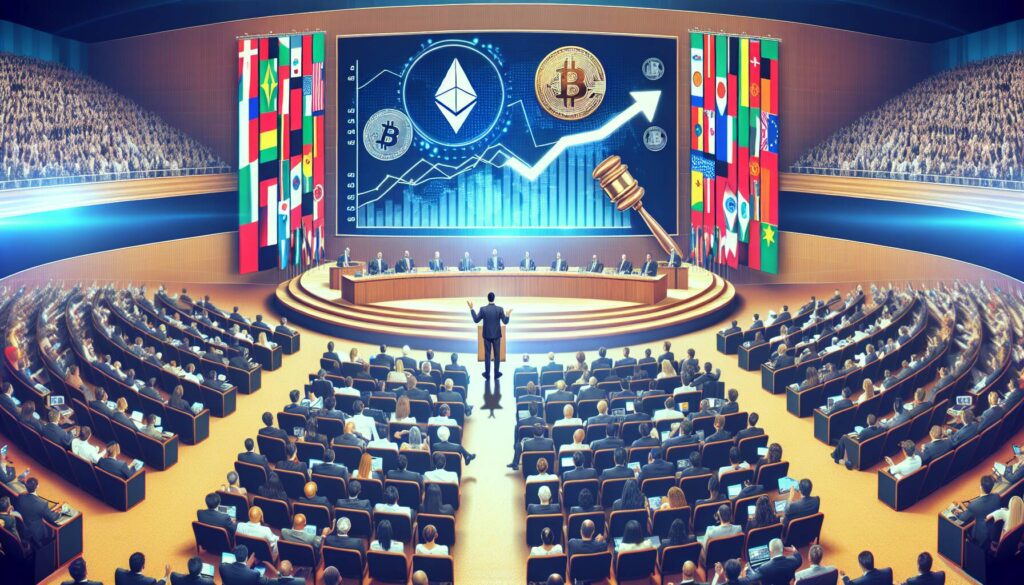In a recent statement, Bitwise’s Chief Investment Officer, Matt Hougan, highlighted Solana’s potential to capture a significant portion of the stablecoin and tokenization market. With its robust technology and fast transaction speeds, Solana has been gaining traction in the ever-evolving cryptocurrency landscape.
The increased interest in decentralized finance (DeFi) and digital assets has placed platforms like Solana at the forefront, attracting investors and developers alike. As blockchain technology continues to mature, the demand for seamless and efficient transactions is driving innovation within this sector.
Hougan’s remarks underscore Solana’s strategic positioning amid growing competition, suggesting that it possesses favorable odds to thrive in a market characterized by rapid evolution and diversification. As various projects and platforms vie for dominance, the ability of Solana to facilitate tokenization and stablecoin integration could be pivotal to its success.
Investors and market observers will be keenly watching how Solana evolves, especially as it relates to the broader adoption of blockchain technology and its implications for the future of digital currencies. With the market constantly shifting, every development in this space is a potential game changer.
Solana’s Prospects in the Stablecoin and Tokenization Market
Insights from Bitwise’s Matt Hougan highlight key aspects of Solana’s potential impact in the cryptocurrency space:
- Competitive Advantage:
- Solana’s technological strengths may position it favorably against other platforms.
- Market Share Potential:
- Increased adoption of stablecoins could lead to a significant uptick in Solana’s usage.
- Tokenization Opportunities:
- Solana’s scalability may enable businesses to leverage tokenization more effectively.
- Investor Confidence:
- Positive outlooks from experts like Hougan might enhance investor interest in Solana.
Readers should monitor Solana’s developments as they could influence future investment decisions and participation in the evolving crypto landscape.
Solana’s Ascendancy in the Stablecoin and Tokenization Landscape
In the competitive arena of stablecoins and tokenization, Solana’s potential for capturing market share is becoming increasingly evident, especially as articulated by Bitwise’s Matt Hougan. This perspective positions Solana as a formidable contender alongside other blockchain giants, suggesting it may soon emerge as a leader in these dynamic sectors.
One of Solana’s significant advantages lies in its high throughput and low transaction costs, which attract projects that require speed and efficiency. This is crucial as more developers look for platforms that can handle large-scale applications without the latency issues prevalent on slower blockchains. In contrast, established players like Ethereum face challenges with scalability and gas fees, which can deter new projects from building on its network.
However, while Solana boasts technical strengths, it is not without its drawbacks. The network has faced criticisms regarding its decentralization, with some skeptics pointing to outages that raise concerns about its robustness in times of high demand. This could impede institutional confidence compared to more established platforms like Ethereum, which has a longer track record and demonstrates a more resilient network performance.
The implications of Solana’s rise are multifaceted. Retail investors and developers looking for efficient tools for tokenization and stablecoin projects could find a new home on Solana, thus benefiting from reduced transaction fees and increased speed. Conversely, traditional finance institutions and existing projects on other blockchains may face challenges as Solana potentially siphons off market share, forcing them to innovate or adapt to maintain competitiveness.
As the landscape evolves, Solana’s capability to capture significant portions of the stablecoin and tokenization markets will be crucial for stakeholders ranging from developers to investors, paving the way for a new chapter in decentralized finance.
















